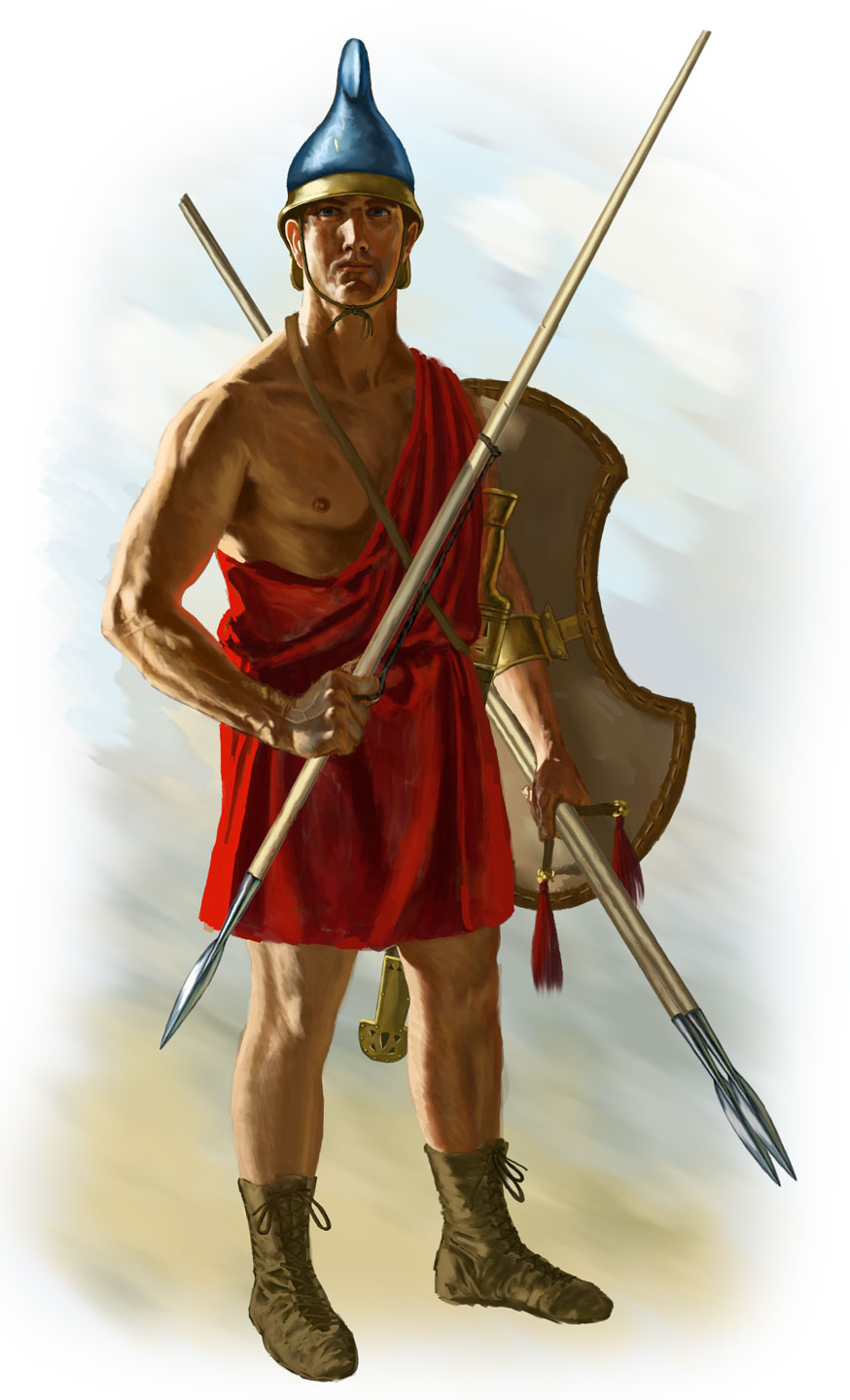|
Flechettes
A flechette ( ) is a pointed steel projectile with a vaned tail for stable flight. The name comes from French , "little arrow" or "dart", and sometimes retains the acute accent in English: fléchette. They have been used as ballistic weapons since World War I. Delivery systems and methods of launching flechettes vary, from a single shot, to thousands in a single explosive round. The use of flechettes as antipersonnel weapons has been controversial. Air-dropped During World War I, flechettes were dropped from aircraft to attack infantry and were able to pierce helmets. Later the U.S. used Lazy Dog bombs, which are small, unguided kinetic projectiles typically about in length, in diameter, and weighing about . The weapons were designed to be dropped from an aircraft. They contained no explosive charge but as they fell they developed significant kinetic energy making them lethal and able to easily penetrate soft cover such as jungle canopy, several inches of sand or light arm ... [...More Info...] [...Related Items...] OR: [Wikipedia] [Google] [Baidu] |
SCMITR
SCMITR was part of an experimental military shotgun ammunition created in the 1970s by AAI Corporation. It was a variation on flechette ammunition, but instead of containing a bundle of tiny needle-like steel darts, the cartridge contained a stack of razor-edged stamped sheet-metal arrow shapes designed to fly aerodynamically. It was considered to be very promising (in terms of lethality and effective range) but prohibitively expensive to manufacture, so it has never been mass-produced. Development SCMITR was part of the CAWS (Close Assault Weapon System) program, which investigated ~20 mm smoothbore weapons (basically combat shotguns) designed to be effective to ranges of 150 metres against combatants wearing body armor. Flechettes, with their high sectional density, were ideal for penetrating rigid or soft composite armor, but the wounds caused by the tiny darts were considered insufficient to disable an enemy combatant, as the tiny hole would quickly clot and cause rela ... [...More Info...] [...Related Items...] OR: [Wikipedia] [Google] [Baidu] |
Special Purpose Individual Weapon
The Special Purpose Individual Weapon (SPIW) was a long-running United States Army program to develop, in part, a workable flechette-firing "rifle", though other concepts were also involved. The concepts continued to be tested under the Future Rifle Program and again in the 1980s under the Advanced Combat Rifle program, but neither program resulted in a system useful enough to warrant replacing the M16. Project SALVO The idea of a flechette-firing individual weapon started in earnest during the Army's Project SALVO. SALVO had earlier concluded that a small weapon with a high rate of fire would be considerably deadlier than the large "full power" weapons being developed in the 1950s, and followed several lines of investigation to find the best way to provide high firing rates. SALVO had a small number of "duplex load" weapons developed, where two bullets were stacked, while Springfield Armory and Olin/Winchester both entered multiple barrel firearms. Even before the SALVO tests, ... [...More Info...] [...Related Items...] OR: [Wikipedia] [Google] [Baidu] |
Beehive Anti-personnel Round
Beehive was a Vietnam war era anti-personnel round packed with metal flechettes fired from an artillery gun most popularly deployed during that conflict. It is also known as flechette rounds or their official designation, antipersonnel-tracer (APERS-T). Typically, artillery gunners fire using indirect fire, firing at targets they cannot see by line of sight, with information provided by a forward observer. However, during the Vietnam War, there was a demand for a munition that could be fired directly at enemy troops, in cases where an artillery unit was attacked. History The flechette rounds were developed under a contract administered by Picatinny Arsenal and let to the Whirlpool Corporation in April 1957. The contract was named the "Beehive Program" referring to the way the flechettes were compartmentalized and stacked, looking like the traditional image of a conical beehive. It was commonly assumed by users in the service that the term referred to a supposed 'buzzing' sou ... [...More Info...] [...Related Items...] OR: [Wikipedia] [Google] [Baidu] |
Lazy Dog (bomb)
The Lazy Dog (sometimes called a Red Dot Bomb or Yellow Dog Bomb) was a small, unguided kinetic projectile used by the U.S. Air Force. It measured about in length, in diameter, and weighed about . The weapons were designed to be dropped from an aircraft. They contained no explosive charge but as they fell they would develop significant kinetic energy making them lethal and able to easily penetrate soft cover such as jungle canopy, several inches of sand, or light armor. Lazy Dog munitions were simple and relatively cheap; they could be dropped in huge numbers in a single pass. Though their effects were often no more deadly than other projectiles, they did not leave unexploded ordnance (UXO) that could be active years after a conflict ended. Lazy Dog projectiles were used primarily during the Korean and the Vietnam Wars. Development Lazy Dog munitions had precursors in air-dropped flechettes dating from World War I. These flechettes were used as anti-personnel weapons, in Z ... [...More Info...] [...Related Items...] OR: [Wikipedia] [Google] [Baidu] |
Dart (missile)
Darts are airborne ranged weapons. They are designed to fly such that a sharp, often weighted point will strike first. They can be distinguished from Javelin (weapon), javelins by the presence of fletching (feathers on the tail) and a shaft that is shorter and/or more flexible. Darts can be propelled by hand or with the aid of a hand-held implement such as a blowgun. They can be distinguished from arrows because they are not used with a Bow (weapon), bow. Darts have been used since pre-history. The plumbatae were lead-weighted darts thrown by infantrymen in Antiquity and the Middle Ages. Darts can be propelled by a number of means. The atlatl uses leverage to increase the velocity of the dart, the kestros (weapon), kestros increases the range of propelled darts using a sling, and the exhalation of a person's breath through a blowgun propels small stone points or poisoned needles with pneumatic force. In the modern era, darts have been used for recreation; in lawn darts and the ... [...More Info...] [...Related Items...] OR: [Wikipedia] [Google] [Baidu] |
Advanced Combat Rifle
The Advanced Combat Rifle (ACR) was a United States Army program, started in 1986, to find a replacement for the M16 assault rifle. Under the stress of battle the average soldier with an M16 may shoot a target at 45 meters, but hit probability is reduced to one out of ten shots on target by 220 meters. Because of this, the ACR program was initiated in the late 1980s to create a weapon that could double the hit probability. The ACR program was preceded by older programs such as the Special Purpose Individual Weapon. The program ended in 1990 after an expenditure of approximately US$300 million. Phase I and II Phase I of the program started in February 1986 when development contracts were placed with six companies: AAI Corporation, Ares Incorporated, Colt's Manufacturing Company, Heckler & Koch (H&K), McDonnell Douglas Helicopter Systems (MDHS), and Steyr Mannlicher. Two weapons were cut from the list before Phase II started. The companies started an appeals process and were e ... [...More Info...] [...Related Items...] OR: [Wikipedia] [Google] [Baidu] |
APS Amphibious Rifle
The APS underwater assault rifle (APS stands for ''Avtomat Podvodny Spetsialnyy'' (Автомат Подводный Специальный) or "Special Underwater Assault Rifle") is an underwater firearm designed by the Soviet Union in the early 1970s. It was adopted in 1975. Made by the Tula Arms Plant (Тульский Оружейный Завод, ''Tul'skiy Oruzheynyy Zavod'') in Russia, it is exported by Rosoboronexport. Under water, ordinary bullets are inaccurate and have a very short range. The APS fires a 120 mm (4.75 in) long 5.66 mm calibre steel bolt specially designed for this weapon. Its magazine holds 26 rounds. The APS's barrel is not rifled; the fired projectile is kept in line by hydrodynamic effects; as a result, the APS is somewhat inaccurate when fired out of water. The APS has a longer range and more penetrating power than spearguns. This is useful in such situations such as shooting an opposing diver through a reinforced dry suit, a prote ... [...More Info...] [...Related Items...] OR: [Wikipedia] [Google] [Baidu] |
Artillery
Artillery is a class of heavy military ranged weapons that launch munitions far beyond the range and power of infantry firearms. Early artillery development focused on the ability to breach defensive walls and fortifications during sieges, and led to heavy, fairly immobile siege engines. As technology improved, lighter, more mobile field artillery cannons developed for battlefield use. This development continues today; modern self-propelled artillery vehicles are highly mobile weapons of great versatility generally providing the largest share of an army's total firepower. Originally, the word "artillery" referred to any group of soldiers primarily armed with some form of manufactured weapon or armor. Since the introduction of gunpowder and cannon, "artillery" has largely meant cannons, and in contemporary usage, usually refers to shell-firing guns, howitzers, and mortars (collectively called ''barrel artillery'', ''cannon artillery'', ''gun artillery'', or - a lay ... [...More Info...] [...Related Items...] OR: [Wikipedia] [Google] [Baidu] |
American Rifleman
''American Rifleman'' is a United States-based monthly shooting and firearms interest publication, owned by the National Rifle Association (NRA). It is the 33rd-most-widely-distributed consumer magazine and the NRA's primary magazine. The magazine has its headquarters in Fairfax, Virginia. History Arthur Corbin Gould, an avid shooter and member of the Massachusetts Rifle Association, published ''The Rifle'' in 1885 as an effort to focus discussion on the sport of rifle shooting. ''The Rifle'' later changed its title to ''Shooting and Fishing'' in 1888, branching out into other outdoor sports. In 1894, while the magazine was titled ''Shooting and Fishing'', Gould attended the National Rifle Association matches held at Sea Girt and was impressed with the level of competition, leading him to write several editorials urging the public to join. This call eventually led to the revitalization of the National Rifle Association and established a Board of Directors to help manage the ... [...More Info...] [...Related Items...] OR: [Wikipedia] [Google] [Baidu] |
Federal Cartridge Company
Federal Premium Ammunition is a wholly owned subsidiary of Vista Outdoor, located in Anoka, Minnesota. With a workforce of nearly 1,500, Federal manufactures shotshell, centerfire, and rimfire ammunition and components. History On April 27, 1922, Charles L. Horn took control of a small plant in Anoka, Minnesota and refounded Federal Cartridge Corporation. Horn launched a distribution plan that involved merchandising Federal products in grocery stores, barbershops, and filling stations. In 1941, Federal won an $87 million contract from the United States government (approx. $1.3 billion in 2010) to build and operate the $30 million Twin City Ordnance Plant. Federal ranked 59th among United States corporations in the value of World War II military production. In 1977, William B. Horn introduced Federal's Premium line of centerfire rifle and shotshell ammunition. Federal also owned Hoffman Engineering, a company that made electronic enclosures. In 1985, Federal was sold to a g ... [...More Info...] [...Related Items...] OR: [Wikipedia] [Google] [Baidu] |
Polyethylene
Polyethylene or polythene (abbreviated PE; IUPAC name polyethene or poly(methylene)) is the most commonly produced plastic. It is a polymer, primarily used for packaging (plastic bags, plastic films, geomembranes and containers including bottles, etc.). , over 100 million tonnes of polyethylene resins are being produced annually, accounting for 34% of the total plastics market. Many kinds of polyethylene are known, with most having the chemical formula (C2H4)''n''. PE is usually a mixture of similar polymers of ethylene, with various values of ''n''. It can be ''low-density'' or ''high-density'': low-density polyethylene is extruded using high pressure () and high temperature (), while high-density polyethylene is extruded using low pressure () and low temperature (). Polyethylene is usually thermoplastic, but it can be modified to become thermosetting instead, for example, in cross-linked polyethylene. History Polyethylene was first synthesized by the German ch ... [...More Info...] [...Related Items...] OR: [Wikipedia] [Google] [Baidu] |








